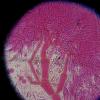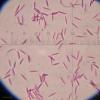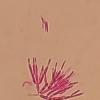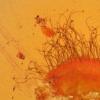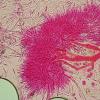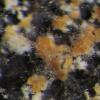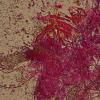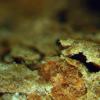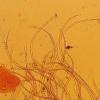
21-12-2025 09:32
Hello.A tiny ascomycete found embedded in wood in

22-12-2025 00:47
Patrice TANCHAUDBonsoir, récolte à proximité du milieu dunaire

21-12-2025 21:32
Pol DebaenstHello, Garden, Burgweg 19, Veurne, BelgiumOn 10/1

21-12-2025 21:40
Isabelle CharissouBonjour, j'aimerais connaitre les références de

21-12-2025 21:31
Pol DebaenstHello, Garden, Burgweg 19, Veurne, BelgiumOn 10/1

21-12-2025 21:31
Pol DebaenstHello, Garden, Burgweg 19, Veurne, BelgiumOn 10/1

20-12-2025 23:08
Patrice TANCHAUDBonsoir, récolte sur sol sablonneux dans l'arri�

20-12-2025 15:47
Mirek GrycHi.These grew on pine wood that was heavily covere
Calonectria on fallen fruit (woody) of Eucalyptus
Stephen Martin Mifsud,
27-11-2015 22:54
 This is the first Calonectria that I am studying. It was found on Eucalyptus cone on the ground. I've checked some descriptions of Calonectria and this species from Malta seems to have two distinct characters: i) the stipe extensions, highly flexuous, have a tapering ending rather than a swollen vessicle; ii) the conidiospores are relatively small - 8-10um. I am not sure if the Conidiogenesis apparatus is 4- or 5- branched, the doubt arising at the phialides area. I am not sure if those amoeba-like cells mostly at the lower part of the species near the stipe are microconidia.
This is the first Calonectria that I am studying. It was found on Eucalyptus cone on the ground. I've checked some descriptions of Calonectria and this species from Malta seems to have two distinct characters: i) the stipe extensions, highly flexuous, have a tapering ending rather than a swollen vessicle; ii) the conidiospores are relatively small - 8-10um. I am not sure if the Conidiogenesis apparatus is 4- or 5- branched, the doubt arising at the phialides area. I am not sure if those amoeba-like cells mostly at the lower part of the species near the stipe are microconidia. Here is my first description of a Calonectria:
Perithecium an amber subgelatinous doliiform body sitting on a velvetly white mass of mycelia. Conidiophores with a stipe bearing fertile penicillate branches, stipe extensions, terminal vesicles and microconidia. Stipe septate, hyaline, smooth, 20-28 × 8–12 ?m; stipe extensions aseptate, flexuous, 120–300 ?m long, 2.2-2.6?m wide, terminating in tapering, rounded or rarely slightly swollen end without any obvious vesicles. Lateral stipe extensions (90 ? to the axis) also present. Conidiogenous apparatus 55–85 ?m long, and 80–160 ?m wide; primary branches aseptate, 16–20 ?m long; secondary branches aseptate, 10–12 ?m long; tertiary branches aseptate 6-9 ?m long; terminal phialides (possibly rebranching again), 12–17 ?m long, linear-fusiform to subfalcate. Macroconidia cylindrical, rounded at both ends, straight, aseptate (8–)9(–10) × 1.2 ?m. Microconidia irregularly rounded to ameboid, 6–8?m with a large central body.
Stephen Martin Mifsud,
27-11-2015 23:32
Christian Lechat,
28-11-2015 04:19

Re : Calonectria on fallen fruit (woody) of Eucalyptus
Hi Stephen,
I think that your fungus is not Calonectria but Sarcopodium = Lanatonectria.
Christian
I think that your fungus is not Calonectria but Sarcopodium = Lanatonectria.
Christian
Stephen Martin Mifsud,
29-11-2015 19:15

Re : Lanatonectria on fallen fruit (woody) of Eucalyptus
Thank you Christian, that was very helpful. Can you tell me please the difference between the two genera, or pehaps a key to the genere of Nectriaceae? Is it possible to ID to species level? I have browsed Lanatonectria and not much info was given, although it seems there are much less species then Calonectria. I have cultivate the fungus on culture media, and hope I get not contamination. It was sharing habitat with Penicillium which I identified as P. sanguifluum (or the closely related P. roseopurpurem).
Any online info or papers on Lanatonectria would be appreciated
Thanks Christian
Any online info or papers on Lanatonectria would be appreciated
Thanks Christian
Stephen Martin Mifsud,
29-11-2015 19:27

Re : Calonectria on fallen fruit (woody) of Eucalyptus
Ps this is very relevant:
https://www.researchgate.net/publication/271539121_Generic_concepts_in_Nectriaceae
https://www.researchgate.net/publication/271539121_Generic_concepts_in_Nectriaceae
Stephen Martin Mifsud,
29-11-2015 20:21

Re : Calonectria on fallen fruit (woody) of Eucalyptus
A quick glance to the pdf linked above and I don't think it is Sarcopodium, but perhaps Xenocylindrocladium. Characters not matching with Sarcopodium: KOH reaction deep red (my specimen reacted green) and Ascospores ellipsoid to fusiform, 1-septate (aseptate and cylindrical in my specimen).
getting more interesting!
getting more interesting!
Christian Lechat,
30-11-2015 04:47

Re : Calonectria on fallen fruit (woody) of Eucalyptus
I think maybe you confuse sexual state and asexual state.
Sarcopodium was the asexual state of Lanatonectria, which was recombined to Sarcopodium because of the code.
Sexual state (Lanatonectria) turns bright red in KOH while the asexual state (Sarcopodium) does not changes color or turns faintly yellow in this medium.
I attach an image of Sarcopodium circinatum from Fuckel's herbarium, the type species of the genus, you can compare with your specimen.
Could you show a closeup of the hairs at margin of the conidiomata?
Regards,
Christian
Sarcopodium was the asexual state of Lanatonectria, which was recombined to Sarcopodium because of the code.
Sexual state (Lanatonectria) turns bright red in KOH while the asexual state (Sarcopodium) does not changes color or turns faintly yellow in this medium.
I attach an image of Sarcopodium circinatum from Fuckel's herbarium, the type species of the genus, you can compare with your specimen.
Could you show a closeup of the hairs at margin of the conidiomata?
Regards,
Christian
Stephen Martin Mifsud,
30-11-2015 20:44

Re : Calonectria on fallen fruit (woody) of Eucalyptus
Hi, i might be confusing the sexual states, but I guess conidia formation indicates that the fungus is in the asexual state. However, sure am I that KOh produced a faint green colour on the white mycelia, and that the hairs ended in a tapering tip, although as shown in the photos, some had some sort of fuzzy tip (maybe conidia clumped casually at the tip).
I am leaving a close up.
Do you have a key to genera for this family?
I am leaving a close up.
Do you have a key to genera for this family?
Christian Lechat,
01-12-2015 09:26

Re : Calonectria on fallen fruit (woody) of Eucalyptus
Hi Stephen,
I'm working with this genus, I made a key that I send you in private.
Cheers,
Christian
I'm working with this genus, I made a key that I send you in private.
Cheers,
Christian
Stephen Martin Mifsud,
01-12-2015 16:33

Re : Calonectria on fallen fruit (woody) of Eucalyptus
Thank you Christian, I will test the key on this curious specimen when I get it (I assume u r sending by email ?). I will let you know and I might also send you some specimens if I fail to reach a conclusion. Exciting!
Regrads
Stephen.
Regrads
Stephen.
Christian Lechat,
01-12-2015 16:55

Re : Calonectria on fallen fruit (woody) of Eucalyptus
yes I sent it by email, I'm surprised that you did not receive it.
Christian
Christian
Stephen Martin Mifsud,
01-12-2015 17:51

Re : Calonectria on fallen fruit (woody) of Eucalyptus
It's neither in my inbox nor in the junk of my info@m*lt*wildplants.com email (*=a)
:-(
I guess the email was less than 10MB and spelt correctly.
:-(
I guess the email was less than 10MB and spelt correctly.
Stephen Martin Mifsud,
01-12-2015 17:58

Re : Calonectria on fallen fruit (woody) of Eucalyptus
In the meantime, the colony formed from innoculation of few specimens turned to be a white- velvetly, monoverticillate Penicillium sp. !
I will retry another innoculation perhaps a contamination, but could it be that there is an association of the yellow Sarcopodium sp. with (sitting over) the white mycelium of a Penicillium sp. and in cultrure the latter growth was much more successful from the former?
I will retry another innoculation perhaps a contamination, but could it be that there is an association of the yellow Sarcopodium sp. with (sitting over) the white mycelium of a Penicillium sp. and in cultrure the latter growth was much more successful from the former?
Stephen Martin Mifsud,
01-12-2015 18:35

Re : Calonectria on fallen fruit (woody) of Eucalyptus
PS, tentative ID: the Penicillium is P. frequentans.
Stephen Martin Mifsud,
06-12-2015 11:38

Re : Calonectria on fallen fruit (woody) of Eucalyptus
Reminder for your key please !!!
Stephen Martin Mifsud,
27-02-2016 19:47

Re : Calonectria on fallen fruit (woody) of Eucalyptus
I have diverted my thoughts on this specimen from the genus Sarcopodium (Calonectria) to Cylindriocladiella. A paper on this genus (see below) somehow convinced me about this, where the genus is characterised by small cylindical conidia, multi-branched conidiophores, penicillate conidiogenesis process, and long, aseptate, stipe extensions. Many specimens had some kind of swollen or bulging tip in their stipe extension, but my specimen do not ( same as C. longistipitata). I remind that the spores are around 8um x 1um hence matching with Cylindriocladiella, a genus circumscribed for its smaller conidia.
My collection from South Europe is not expected to correspond to any of the species in the paper below, but I wanted to hear opinions about my suggestions that the species i found is Cylindriocladiella sp.
https://www.researchgate.net/publication/257694819_Phylogeny_and_taxonomy_of_the_genus_Cylindrocladiella
My collection from South Europe is not expected to correspond to any of the species in the paper below, but I wanted to hear opinions about my suggestions that the species i found is Cylindriocladiella sp.
https://www.researchgate.net/publication/257694819_Phylogeny_and_taxonomy_of_the_genus_Cylindrocladiella

